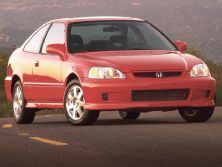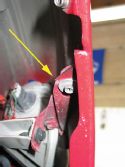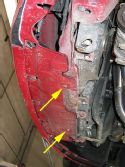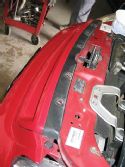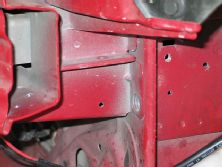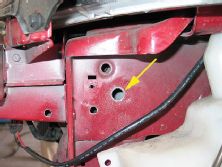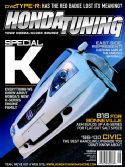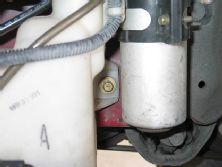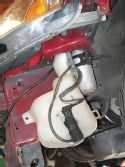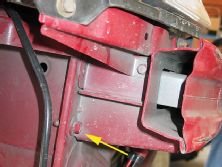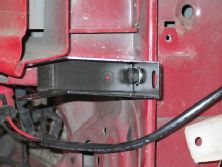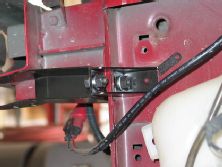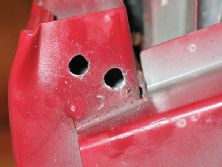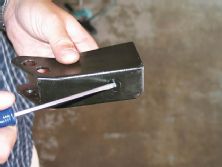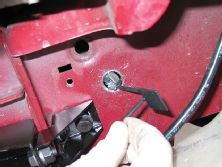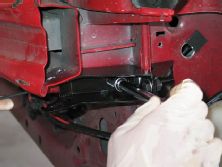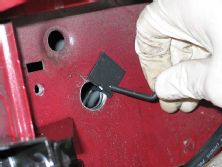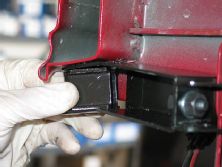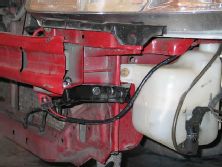As a group, sport compact enthusiasts tend to spend a lot of money trying to achieve perfect handling in their rides. It's common to find vehicles sporting every kind of aftermarket juice available-springs, shocks, tie bars, anti-roll bars, polyurethane bushings-just to smooth out its behavior while maneuvering.
Many times, though, even the best of suspension and handling parts need plenty of adjustment or to be exposed to extremes, or both, to show any real benefit. And rarely do any of these parts show improvement under normal types of driving.
Luckily most Hondas handle pretty well right off the lot, or at least well enough to satisfy the average consumer. If you're reading this magazine, chances are you're not interested in stock. You've probably whipped your buggy around a few turns in your day and are still looking for that one bolt-on that will give you total confidence through any curve.
Enter Krbach Performance, makers of Frame Locks for sixth-gen. ('96-'00) Civic coupes and sedans, a unique product that turns the car's front bumper beam from a vibrational liability into a structural asset. The science behind the product is straightforward: the geometry of the bumper beam/frame rail joint is weak because the attachment to the beam is made with thin, 2.5mm flanges that flare out laterally from the front of each rail. The vibrating forces exerted on the front structure as the car drives over road surface imperfections are significant, as are the forces of the 500-pound engine bouncing on the mounts that are directly attached to the rails. Since these inputs are transmitted through the weak flanges, the car responds by shaking as it's driven.
The bumper beam, meanwhile, is essentially a piece of dead weight shaking at the extreme end point of the car. The fact that it's cantilevered so far forward actually multiplies the vibrational forces back to the driver.
A static analogy to this would be the force multiplication of using a crowbar. A small force at the end of the long part of a crowbar results in a large force at the short end. The same is true dynamically with the front end of the car. There's a dynamic fulcrum point known as a vibrational node just forward of the driver. Shaking forces from the bumper are transmitted and amplified to the cabin.
Since the frame rails aren't effectively tied together at the bumper, it's an inefficient structure and therefore responds to road bumps and engine torque. Frame Locks use the bumper beam as part of the front-end chassis, employing brackets to tie the bumper beam and beam extensions to the frame rails and essentially making the bumper beam a load-bearing part of the chassis. The engineers at Krbach believe the Frame Locks stiffen and solidify the front end of the car and minimize the frame's lateral flex.
Sounds like a whole bunch of black magic, but when the guys at Krbach asked if we wanted try out their product we figured there was no better way to get to the truth. We lined up MD Automotive in Westminster, Calif., to do the work and received donor cars from former Club Si moderator Jimmy Dinh and our own production coordinator Bill Klein. The install took a little over an hour.
With the Frame Locks dialed in we tested the cars on city streets. Well, the difference was like night and day. In fact, rarely do we encounter an aftermarket handling product that delivers what it claims so immediately. The Frame Locks affected the cars right off the bat, regardless of speed or road setting. The Civics felt abundantly more solid over all conditions. On roundabout freeway on-ramps, the vehicles were undaunted by lateral acceleration, and mid-corner braking and throttle lift-off did little to unplant them either. Even over bumpy roads and train tracks, the cars handled better. The newfound solidity translated to a much smoother ride and improved steering feel. The owners of our test Civics were equally pleased.
In fact, we asked Dinh for his impressions and he gushed, "I took [the Civic] out on a familiar mountain road where I know all the twists, bumps, and potholes by heart. I couldn't believe the improvement; it was like a different car! Every turn was smooth and solid. The bumpy parts definitely felt less bumpy too. I took a high-speed turn and felt no [frame] twisting whatsoever. Some of the dips in the road were severe, but with the Frame Locks installed, the car felt great."
Currently Krbachh only makes the Frame Locks for the '96-to-'00 Civic, but the company plans to develop and introduce similar offerings for other Honda models. Expect to pay around $245 for the Frame Locks, although if you act quickly the company is selling them for $195 through October.

